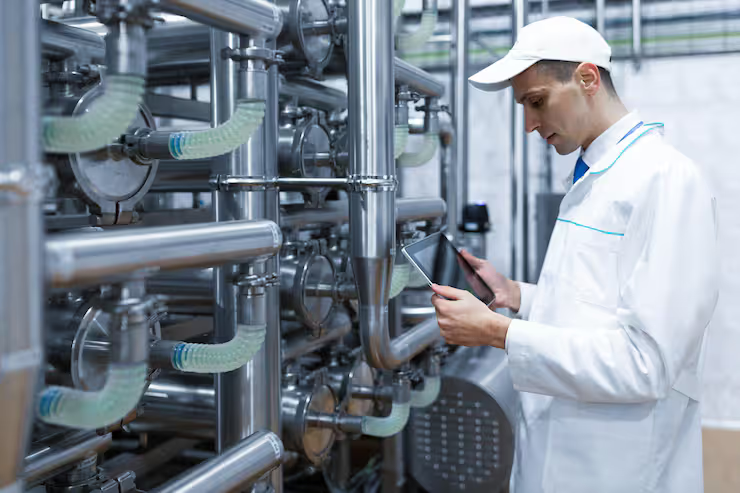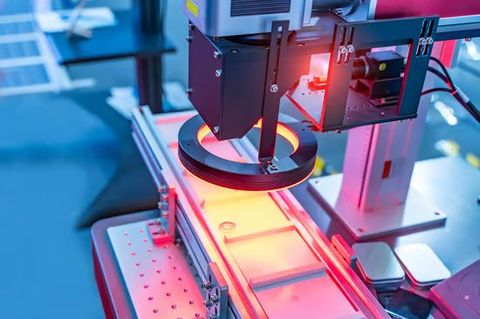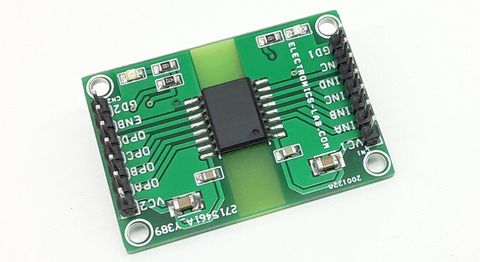Insights into Modern Chemical Dosing Systems for Water Treatment
Water treatment is essential for ensuring clean, safe, and usable water across industries, municipalities, and households. One of the most critical processes in water treatment is chemical dosing, which involves the precise addition of chemicals like chlorine, coagulants, acids, or alkalis to adjust water quality.
Chemical dosing systems were developed to improve accuracy and efficiency, replacing manual dosing methods that often led to waste, errors, and safety risks. Today, these systems are used in municipal water plants, industrial facilities, food processing units, and wastewater treatment plants.

Importance – Why chemical dosing matters today
Modern chemical dosing systems are important because they:
-
Protect public health: Ensure safe drinking water by eliminating harmful bacteria and contaminants.
-
Support industries: Provide reliable water treatment for power plants, pharmaceuticals, textiles, and manufacturing.
-
Improve efficiency: Automate chemical delivery, reducing waste and minimizing human error.
-
Enhance compliance: Meet stringent water quality and environmental standards.
-
Promote sustainability: Optimize chemical use, lowering costs and reducing environmental impact.
Communities, businesses, and governments all rely on these systems to ensure water safety, environmental protection, and resource efficiency.
Recent Updates – Advancements in dosing technology
The water treatment sector has seen significant changes in the past year (2024–2025):
-
Smart dosing systems: Many plants now use IoT-enabled dosing pumps that adjust chemical levels in real-time.
-
AI-based monitoring: Algorithms analyze water quality data and automatically modify chemical dosage for precision.
-
Green chemicals: Growing adoption of eco-friendly coagulants and disinfectants reduces environmental harm.
-
Remote control: Operators can monitor and manage dosing systems via mobile apps and cloud dashboards.
-
Compact modular systems: Designed for small-scale industries and rural water treatment, offering cost-effective solutions.
These advancements highlight the industry’s shift toward automation, sustainability, and digital transformation.
Laws or Policies – Regulatory impact on dosing systems
Chemical dosing systems are closely regulated to ensure water quality, safety, and environmental compliance. Regulations vary by country, but generally include:
-
World Health Organization (WHO) Guidelines: Set international standards for safe drinking water.
-
Environmental Protection Agency (EPA – USA): Regulates disinfection methods, chemical usage, and wastewater treatment standards.
-
European Union Water Framework Directive: Requires sustainable water use and strict quality monitoring.
-
India’s Bureau of Indian Standards (BIS): Defines permissible limits for chemicals in treated water.
-
Occupational Safety Rules: Mandate safe handling, storage, and dosing of chemicals to protect workers.
Governments also provide incentives for sustainable technologies, encouraging industries to adopt eco-friendly and efficient dosing systems.
Tools and Resources – Helpful support for water treatment
Several tools, platforms, and resources help organizations select and manage chemical dosing systems effectively:
Monitoring and Automation Tools
-
SCADA (Supervisory Control and Data Acquisition): Widely used to monitor and control dosing operations.
-
IoT dashboards: Provide real-time chemical dosing data accessible via web or mobile devices.
Calculation and Design Tools
-
Chemical dosing calculators: Available online to determine required dosage based on water quality.
-
Flow rate monitoring software: Ensures accurate dosing in changing water flow conditions.
Learning Resources
-
Water treatment associations (AWWA, WEF): Publish guidelines, case studies, and training material.
-
Webinars and certification courses: Offered by environmental institutes on chemical dosing safety and design.
Supportive Services
-
Equipment vendors: Provide after-sales support, training, and spare parts.
-
Consulting firms: Help industries design customized dosing systems.
Table – Types of Chemical Dosing Systems
| Dosing System Type | Application Area | Key Chemicals Used | Advantages |
|---|---|---|---|
| Manual Dosing Systems | Small-scale industries | Basic disinfectants | Low cost, simple operation |
| Automated Dosing Pumps | Municipal water plants | Chlorine, coagulants | High accuracy, less manpower |
| Smart IoT Dosing Systems | Large industries, cities | Multiple chemicals | Real-time control, data insights |
| Batch Dosing Units | Wastewater treatment plants | Acids, alkalis | Handles variable loads efficiently |
| Dual Chemical Systems | Food & pharma industries | Specialized chemicals | Multi-chemical flexibility |
FAQs – Common questions about chemical dosing systems
Q1: What chemicals are commonly used in dosing systems?
Common chemicals include chlorine, alum, ferric chloride, acids, alkalis, and disinfectants depending on the treatment goal.
Q2: How do automated dosing systems work?
They use sensors and pumps to monitor water quality and automatically adjust the chemical dose to maintain compliance.
Q3: Are modern dosing systems safe for operators?
Yes. New systems come with enclosed storage, leak detection, and automated control, reducing direct chemical handling.
Q4: What is the cost of installing a chemical dosing system?
Costs vary based on scale, ranging from a few thousand dollars for small units to hundreds of thousands for large plants.
Q5: Can dosing systems reduce environmental impact?
Yes. By optimizing chemical use, they minimize waste, reduce pollution, and improve sustainability.
Final thoughts
Modern chemical dosing systems are transforming how industries and municipalities treat water. With the shift toward automation, smart technologies, and eco-friendly practices, these systems are not only improving efficiency but also ensuring compliance with environmental and safety regulations.
For organizations looking to enhance water treatment, investing in the right dosing system can lead to better water quality, lower costs, and long-term sustainability.




